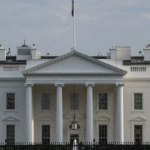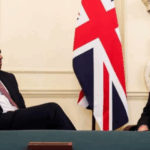Washington, D.C. – U.S. President Donald Trump has announced significant tariff hikes on steel and aluminum imports, raising rates to 25% across the board with no exceptions or exemptions. The move, aimed at bolstering domestic production, has already triggered strong reactions from global trade partners, raising concerns about a potential multi-front trade war.
Under the new policy, the tariff on aluminum imports will increase from 10% to 25%, while country-specific exemptions and quota deals—which had allowed some nations to export metals to the U.S. duty-free—will be eliminated. Product-specific exclusions granted in recent years will also be revoked.
The tariffs, which will take effect on March 4, will impact millions of tons of imported steel and aluminum from key suppliers such as Canada, Brazil, Mexico, and South Korea.
A Push to Strengthen Domestic Industry
Explaining the move, President Trump said the decision would simplify the system and ensure that foreign producers do not have an unfair advantage.
“It’s 25% without exceptions or exemptions. That’s all countries, no matter where it comes from,” Trump told reporters at the White House.
He also hinted at a possible exemption for Australia, citing the country’s trade deficit with the U.S.
The tariff hikes extend the 2018 Section 232 tariffs, which were initially implemented on national security grounds. A White House official stated that previous exemptions had weakened the effectiveness of these measures.
Additionally, the administration is introducing a new North American production standard, requiring steel to be “melted and poured” and aluminum to be “smelted and cast” within the region. This measure aims to block minimally processed Chinese and Russian metals from entering the U.S. market via other countries.
The tariffs will also be expanded to include downstream products that incorporate foreign-made steel, such as fabricated structural steel, aluminum extrusions, and steel strand for pre-stressed concrete.
“Steel and aluminum tariffs 2.0 will put an end to foreign dumping, boost domestic production, and secure our steel and aluminum industries as the backbone of America’s economic and national security,” said Trump trade adviser Peter Navarro.
Global Backlash and Retaliation Threats
The decision has sparked strong reactions from key trade partners.
Canada, the U.S.’s top supplier of primary aluminum, called the move “totally unjustified”. Industry Minister François-Philippe Champagne warned that Canadian exports support key U.S. industries, including defense, energy, and auto manufacturing.
The European Commission stated it saw “no justification” for the tariffs, while the UK government said it was “engaging with the U.S.” on the matter.
South Korea’s Industry Ministry called urgent meetings with steelmakers to discuss how to minimize the impact of the new tariffs.
China, which exports minimal steel to the U.S., is often blamed for global overproduction. The U.S. argues that subsidized Chinese steel forces other countries to redirect their exports, exacerbating the trade imbalance.
Impact on Markets and Future Trade Policies
Following the announcement, Asian and European steelmakers saw stock losses, while shares of U.S. steel and aluminum manufacturers surged in anticipation of increased domestic demand.
President Trump has signaled that this move is part of a broader trade policy shift, vowing to impose reciprocal tariffs on countries that maintain higher duties on U.S. goods. He specifically criticized the EU’s 10% tariff on auto imports, compared to the U.S. rate of 2.5%, and suggested new tariffs on cars, semiconductors, and pharmaceuticals could follow.
The American Iron and Steel Institute reported that steel imports accounted for 23% of U.S. steel consumption in 2023, with Canada, Brazil, and Mexico as the largest suppliers. Meanwhile, U.S. aluminum production has declined from 3.7 million metric tons in 2000 to just 670,000 metric tons last year, leaving the country highly dependent on imports.
Political and Economic Uncertainty
The announcement comes amid escalating tensions with Canada and Mexico, with Trump previously threatening a 25% tariff on all imports from both countries over border security concerns. While those tariffs are currently on hold until March 1, the latest decision raises fresh uncertainty over trade relations with North America and beyond.
With the 2024 presidential election looming, Trump’s aggressive tariff policies are expected to be a major point of debate—particularly as businesses, global allies, and trade organizations weigh the potential economic fallout.
















